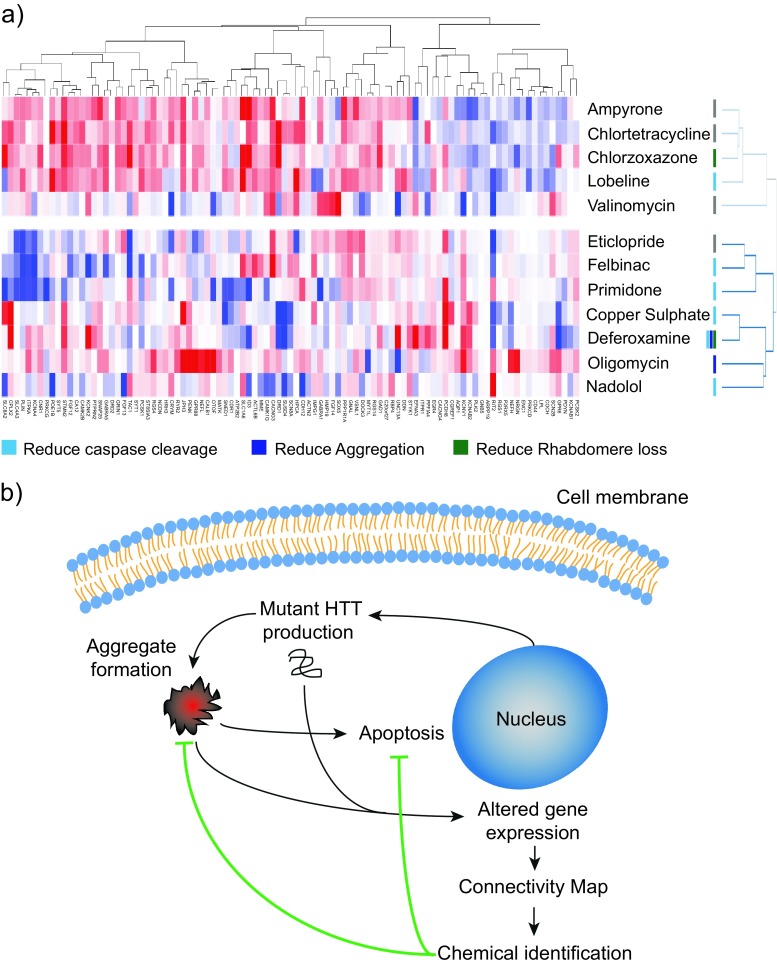Fig. 5.
Scheme indicating that a gene expression pattern for HD can be used to identify chemicals that ameliorate mutant HTT fragment-mediated cell damage. a Hierachical clustering of the effect of each negatively correlated chemical on HD-induced genes reveals two distinct clusters of chemicals. Protective chemicals are contained within both clusters, with those effecting aggregation in the lower cluster. This highlights how the cMap can identify chemicals with multiple modes of action that protect against mutant HTT toxicity. The data was extracted from the cMap database and was clustered by Pearson correlation. b A human-derived gene expression profile for HD was used to identify potential therapeutic agents. Several chemicals reduced HTT103Q-induced cell death in vitro and in vivo, both with and without affecting aggregation, thus indicating the detection of protective chemicals with different mechanisms of action

